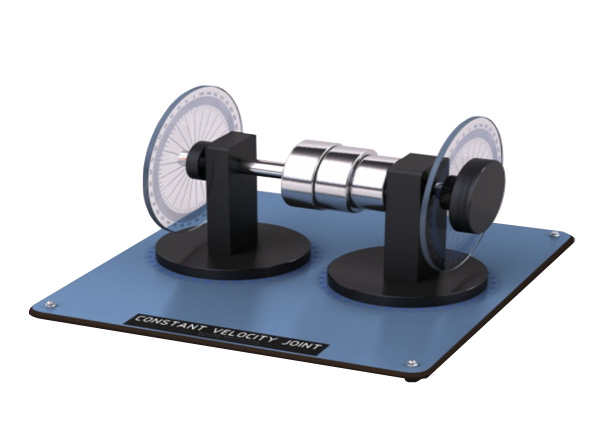Constant Velocity Joint

This mechanism demonstrates relative angular motion between two intersecting shafts through shifting balls as found in front drive shafts of an automobile. The angle between input and output shafts is adjustable.
Constant-velocity (CV) joints have become standard design and an integral part of modern vehicles, primarily due to their superiority in terms of CV torque transfer. Despite widespread usage of constant velocity joints there are certain aspects of their friction, wear, and contact characteristics that are not well understood. In this article, the need to directly measure CV joint internal contact and friction forces is addressed by designing and constructing an instrumented advanced CV joint friction apparatus using actual tripod-type joint assemblies. The apparatus is capable of measuring key performance parameters such as friction and wear under different realistic operating conditions of oscillatory speeds and CV joint articulation angles. The apparatus incorporates a custom-installed triaxial force sensor inside of the CV joint to measure in situ internal CV joint forces (including friction).

